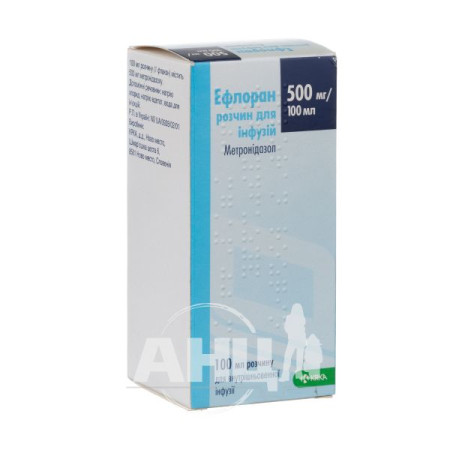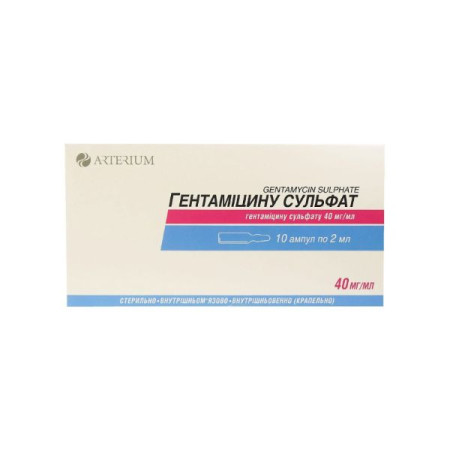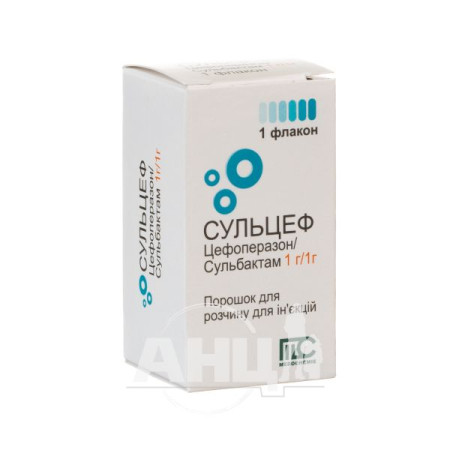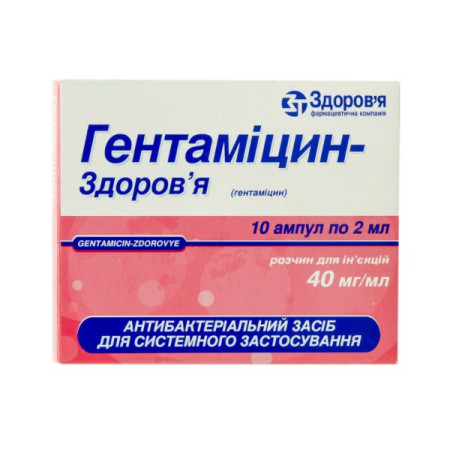Diflucan solution for infusion 2 mg/ml bottle 100 ml No. 1
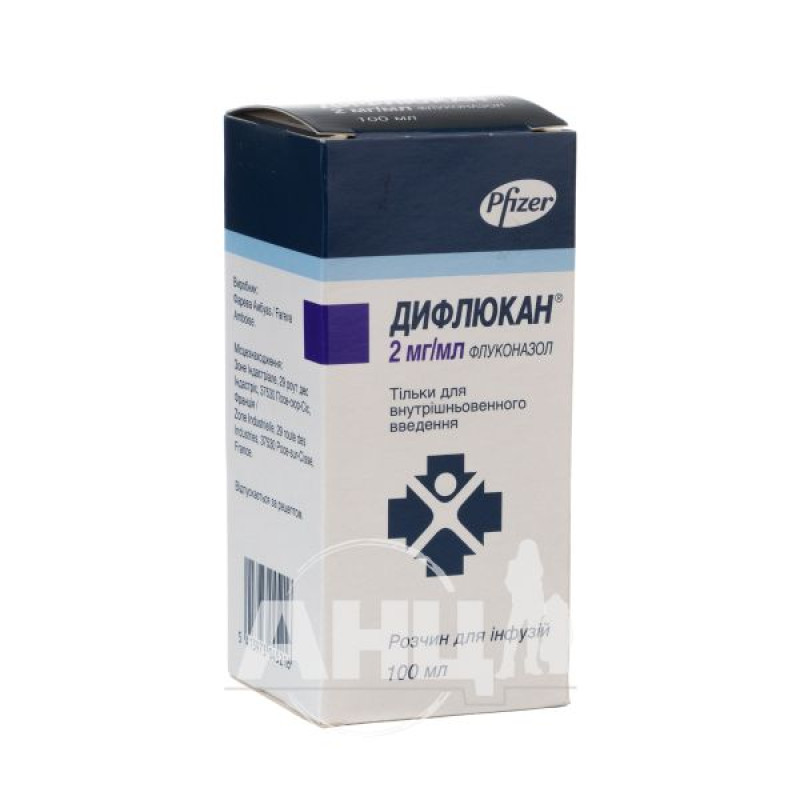
Diflucan® is indicated for the treatment of the following fungal infections in adults (see Pharmacological section):
cryptococcal meningitis (see section "Special instructions for use");
coccidioidomycosis (see section "Special instructions for use");
Invasive candidiasis; candidiasis of the mucous membranes, including oropharyngeal candidiasis and esophageal candidiasis, candiduria, chronic candidiasis of the skin and mucous membranes, chronic atrophic candidiasis of the oral cavity (candidiasis caused by the use of dentures) in case of ineffectiveness of oral hygiene or local therapy.Diflucan ® is indicated for the prevention of the following diseases in adults:
Recurrence of cryptococcal meningitis in patients at high risk of developing it; Recurrence of oropharyngeal or oesophageal candidiasis in HIV patients at high risk of developing it; Prevention of candidal infections in patients with prolonged neutropenia (e.g. patients with blood malignancies receiving chemotherapy or patients undergoing haematopoietic stem cell transplantation) (see section "Pharmacological properties. Pharmacological").Diflucan® is indicated in children from birth for the treatment of candidiasis of the mucous membranes (oropharyngeal candidiasis, esophageal candidiasis), invasive candidiasis, cryptococcal meningitis and for the prevention of candidal infections in patients with reduced immunity. The drug can be used as maintenance therapy to prevent recurrence of cryptococcal meningitis in children at high risk of its development (see Section "Special instructions").
Diflucan® therapy may be initiated prior to obtaining the results of culture and other laboratory tests; however, once the results are available, anti-infective therapy should be adjusted accordingly.
Composition
active ingredient: fluconazole;
1 ml 2 mg fluconazole;
Excipients: sodium chloride, water for injections.
Fluconazole is an antifungal agent of the triazole class. Its primary mechanism of action is inhibition of fungal cytochrome P450-mediated 14-alpha-lanosterol demethylation, an essential step in fungal ergosterol biosynthesis. Accumulation of 14-alpha-methyl sterols correlates with subsequent loss of ergosterol from the fungal cell membrane and may be responsible for the antifungal activity of fluconazole. Fluconazole is more selective for fungal cytochrome P450 enzymes than for various mammalian cytochrome P450 enzyme systems.
Contraindication
Hypersensitivity to fluconazole, other azole compounds or to any of the excipients of the drug listed in the "Composition" section.
Concomitant use of fluconazole and terfenadine in patients receiving fluconazole multiple times at doses of 400 mg/day and above (according to the results of a multiple-dose interaction study).
Concomitant use of fluconazole and other drugs that prolong the QT interval and are metabolized by the CYP3A4 enzyme (e.g. cisapride, astemizole, pimozide, quinidine and erythromycin) (see sections "Special warnings and precautions for use" and "Interaction with other medicinal products and other types of interactions").
Method of administration and doses
The dose of fluconazole depends on the type and severity of the fungal infection.
If repeated use of the drug is necessary, treatment of infections should be continued until the disappearance of clinical and laboratory manifestations of fungal infection activity. Insufficient duration of treatment may lead to the resumption of the active infectious process.
Diflucan ® is used, depending on the dosage form, either orally (capsules) or by infusion (solution for infusion). The method of administration of the drug depends on the clinical condition of the patient. There is no need to change the daily dose of the drug when changing the route of administration from oral to intravenous and vice versa.
The infusion solution should be administered at a rate not exceeding 10 ml/min.
Drug compatibility.
Diflucan ® is compatible with such solutions as:
5% and 20% glucose solution; Ringer's solution; Hartmann's solution; potassium chloride solution in glucose; 4.2% and 5% sodium bicarbonate solution; 3.5% aminosin solution; 0.9% sodium chloride solution dialaflex (6.36% solution for intraperitoneal dialysis).Diflucan® can be administered into the infusion system together with one of the above solutions. Although cases of non-specific incompatibility of the drug with other agents have not been described, it is not recommended to mix Diflucan® with other drugs before infusion.
The solution for infusion is for single use only. Dilution should be carried out under aseptic conditions. The solution should be inspected visually for particulate matter and discoloration. The solution should only be used if it is clear and free of particulate matter. Any unused portion should be discarded.
Children.
The maximum daily dose of 400 mg should not be exceeded.
As with similar infections in adults, the duration of treatment depends on the clinical and mycological response. Diflucan ® is used once a day.
Application features
Use during pregnancy or breastfeeding
An observational study has shown an increased risk of spontaneous abortion in women treated with fluconazole during the first trimester of pregnancy. Multiple congenital anomalies (including brachycephaly, auricular dysplasia, excessive anterior fontanelle enlargement, hip dysplasia, and brachioradial synostosis) have been reported in infants born to mothers who received high doses of fluconazole (400-800 mg/day) for at least three or more months for the treatment of coccidioidomycosis. The relationship between fluconazole use and these cases has not been established.
Children
The drug is used in children from birth, see the section "Method of administration and dosage".
Ability to influence reaction speed when driving vehicles or other mechanisms
No studies have been conducted on the effect of Diflucan® on the ability to drive or use other mechanisms.
Patients should be informed about the possibility of dizziness or convulsions (see section "Adverse reactions") during the use of Diflucan ®. If such symptoms develop, it is not recommended to drive a car or operate complex mechanisms.
Overdose
There have been reports of overdose with fluconazole; hallucinations and paranoid behavior have also been reported.
In case of overdose, symptomatic supportive therapy should be carried out and, if necessary, gastric lavage should be performed.
Fluconazole is largely excreted in the urine; forced diuresis may accelerate drug elimination. A 3-hour hemodialysis session reduces plasma fluconazole levels by 50%.
Adverse reactions
The most frequently reported adverse reactions (> 1/10) were: headache, abdominal pain, diarrhea, nausea, vomiting, increased alanine aminotransferase (ALT), increased aspartate aminotransferase (AST), increased blood alkaline phosphatase, rash.
Interaction with other medicinal products and other types of interactions
The concomitant use of fluconazole and the following drugs is contraindicated.
Cisapride: Cardiac adverse reactions, including torsades de pointes, have been reported in patients receiving fluconazole and cisapride concomitantly. A controlled study demonstrated that concomitant administration of 200 mg of fluconazole once daily and 20 mg of cisapride four times daily resulted in significant increases in plasma cisapride levels and prolongation of the QT interval. Concomitant use of fluconazole and cisapride is contraindicated.
Terfenadine: Due to cases of serious cardiac arrhythmias caused by QTc prolongation in patients receiving azole antifungals concomitantly with terfenadine, drug interaction studies have been conducted. One study with fluconazole 200 mg/day showed no QTc prolongation. Another study with fluconazole 400 mg/day and 800 mg/day demonstrated that doses of 400 mg/day or higher significantly increased plasma levels of terfenadine when these drugs were administered concomitantly. The concomitant use of fluconazole 400 mg/day or higher with terfenadine is contraindicated.
Storage conditions
No special storage conditions required. Keep out of reach of children. Do not freeze.
Shelf life - 5 years.
There are no reviews for this product.
There are no reviews for this product, be the first to leave your review.
No questions about this product, be the first and ask your question.

